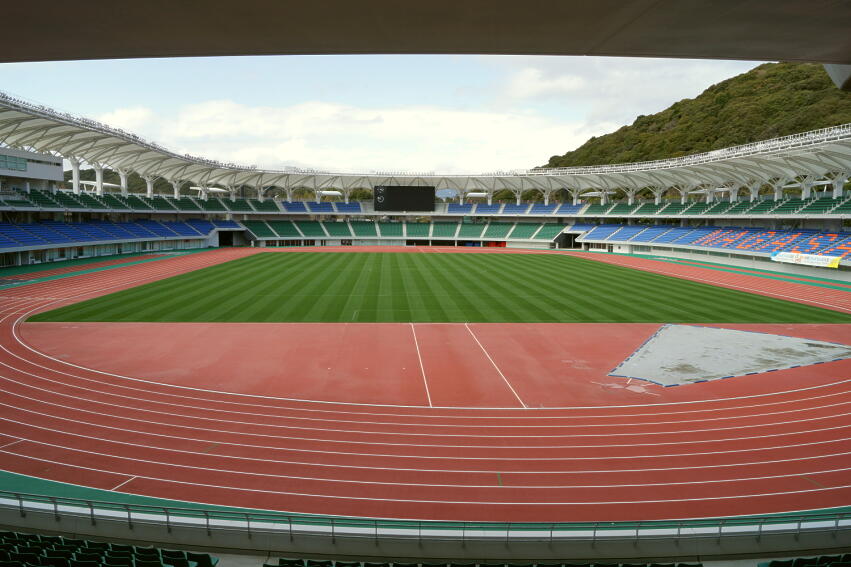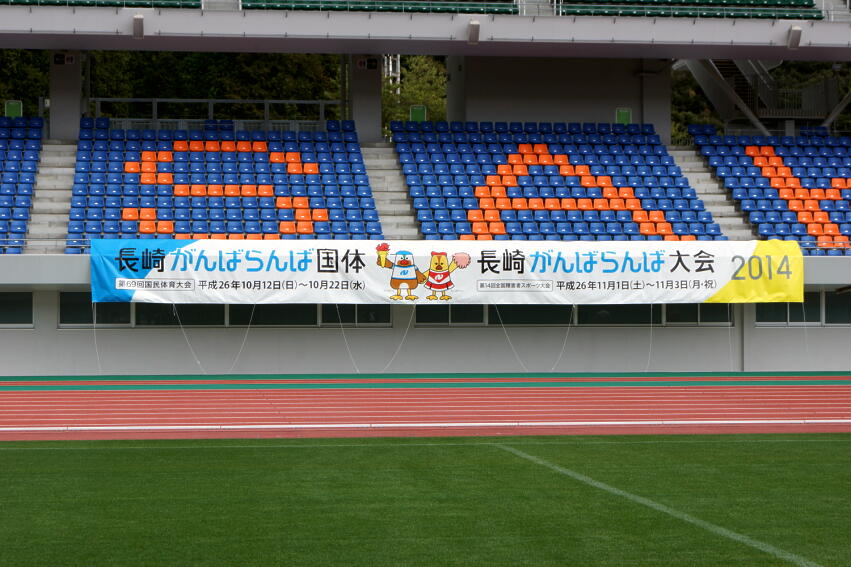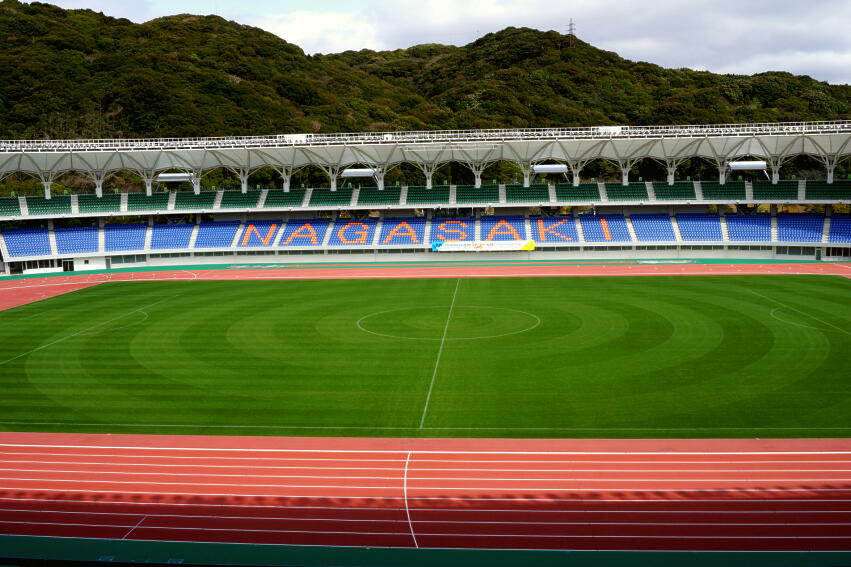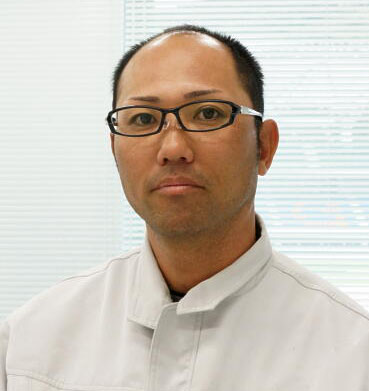Fertilizer-free and Agrochemical-free Turf Management based on IPM and leveraging the power of Bio-genics
Nagasaki Prefectural Recreation Park (Nagasaki Prefecture)



Overview
Nagasaki Prefectural Recreation Park in Nagasaki Prefecture is the home ground of the soccer J-League team V-Varen Nagasaki. In addition to the stadium, it has tennis courts and pools, a softball field and various other sports facilities. We spoke with Kunihiko Shimizu, the groundkeeper who manages this vast expanse, with a total area of 50,000 m2.
Challenges
Before coming to the Nagasaki Prefectural Recreation Park, I was a brand-new groundkeeper at another stadium, and had an experience whereby agrochemicals and nutrients applied to the turf in winter had absolutely no effect. The turf management at that stadium consisted of typical “symptomatic treatment” using mainly agrochemicals and chemical fertilizer. This entails spreading fungicides and pesticides against insect pests, then using chemical fertilizer to promote turf growth. That resulted in insect pests being produced by the fertilizer, so once again you have to use agrochemicals – a vicious circle, for which we couldn’t find a solution.
Solution
When I came to the Nagasaki Prefectural Recreation Park, I decided to learn more about turf physiology and worked on gathering a lot of information. I discovered the method recommended by sports turf expert Takato Numada of G-Stage, cultivating with fewer agrochemicals and less fertilizer, which is based on many years of accumulated empirical data. This method is effective for managing sports turf while at the same time avoiding damage to the natural environment. So I started managing the turf here based on the IPM (Integrated Pest Management) method using bio-genic products (organic ingredients).
Benefits
I used Bio-genics Product A to decompose the thatch that had built up over many years and to fertilize the soil, then used Bio-genics Product M to try and improve the soil microorganisms. As a result, the open lawn space of about 15,000 m2 is being managed without agrochemicals or chemical fertilizer. The open lawn space is used daily for ground golf and target bird golf, but the turf stays green and strong, and doesn’t peel off. About 90% of the products we use in the Park are bio-maintenance products, and less than 10% are chemical products. Our goal for the future is to be completely agrochemical-free.
Interview

Before I was hired as groundkeeper here, Mr. Numada helped me deepen my understanding of IPM by showing me empirical data, and having me visit facilities where they were actually reducing the use of chemicals. If I hadn’t had those experiences, it probably would have been extremely difficult to opt out of using chemicals.
For example, if you use chemicals to exterminate insect pests, you’re also killing filamentous fungi in the soil. Filamentous fungi also have the capacity to decompose thatch, so the more chemicals you use, the harder it will be for the thatch to be decomposed.
Some filamentous fungi are perceived as causing disease, but it’s more a question of maintaining the balance in the soil environment. I think it’s important to know the soil and then think about creating the ideal environment for the plants.